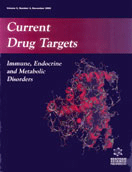Abstract
Our perception of the function of the pineal gland and its hormone melatonin has attained a new dimension during the last decade. Through melatonin, the pineal becomes a principal organ present in vertebrates involved in the control of rhythmic adaptations to daily and seasonal cycles. Melatonin is synthesized and secreted during the dark period of the light / dark cycle. The rhythmic nocturnal melatonin secretion is directly generated by the circadian clock and is entrained to a 24-hour period by the light-dark cycle. The periodic secretion of melatonin may be used as a circadian mediator to any system than can “read” the message. Melatonin acts as an arm of the circadian clock, giving a timerelated signal to a number of body functions; one of them is the circadian organization of the immune response. This review discusses melatonin role in rheumatoid arthritis. Animal studies employing Freunds complete mycobacterial adjuvant (FCA) as a model of rheumatoid arthritis are described. Immune and neuroendocrine circadian rhythms were examined in FCA-injected rats, both in the preclinical phase of arthritis (2-3 days after FCA injection) as well as in the acute phase of the disease (18 days after FCA injection). In arthritic rats, the 24-h organization of immune and neuroendocrine responses becomes altered. Significant effects of immune response on diurnal rhythmicity of adenohypophysial and hypophysiotropic hormones occurred in arthritic rats. Melatonin treatment prevented alteration of 24-h rhythms of serum ACTH, prolactin and luteinizing hormone in rats injected with FCA. In addition, melatonin treatment prevented alteration of the 24-h variation in hypothalamic monoamine transmitter turnover during the preclinical phase of Freunds adjuvant arthritis in rats. A comparison between the inflammatory and immune responses elicited by physiological and pharmacological doses of melatonin in FCA arthritis is reported. Pinealectomized rats exhibited a significantly less pronounced inflammatory response, which was restored to normal by a low melatonin dose (0.3 μg / ml of drinking water), whereas a high melatonin dose (30 μg / ml) that resulted in a 50- 60-fold increase in plasma melatonin, augmented the inflammatory and immune response. These results should be considered in the light of recent reports that rheumatoid arthritis patients have increased nocturnal plasma levels of melatonin and that their synovial macrophages respond to melatonin with an increased cytokine production.
Keywords: freunds adjuvant arthritis, melatonin, circadian rhythms, cytokines, neuroimmune mechanisms
 11
11


















